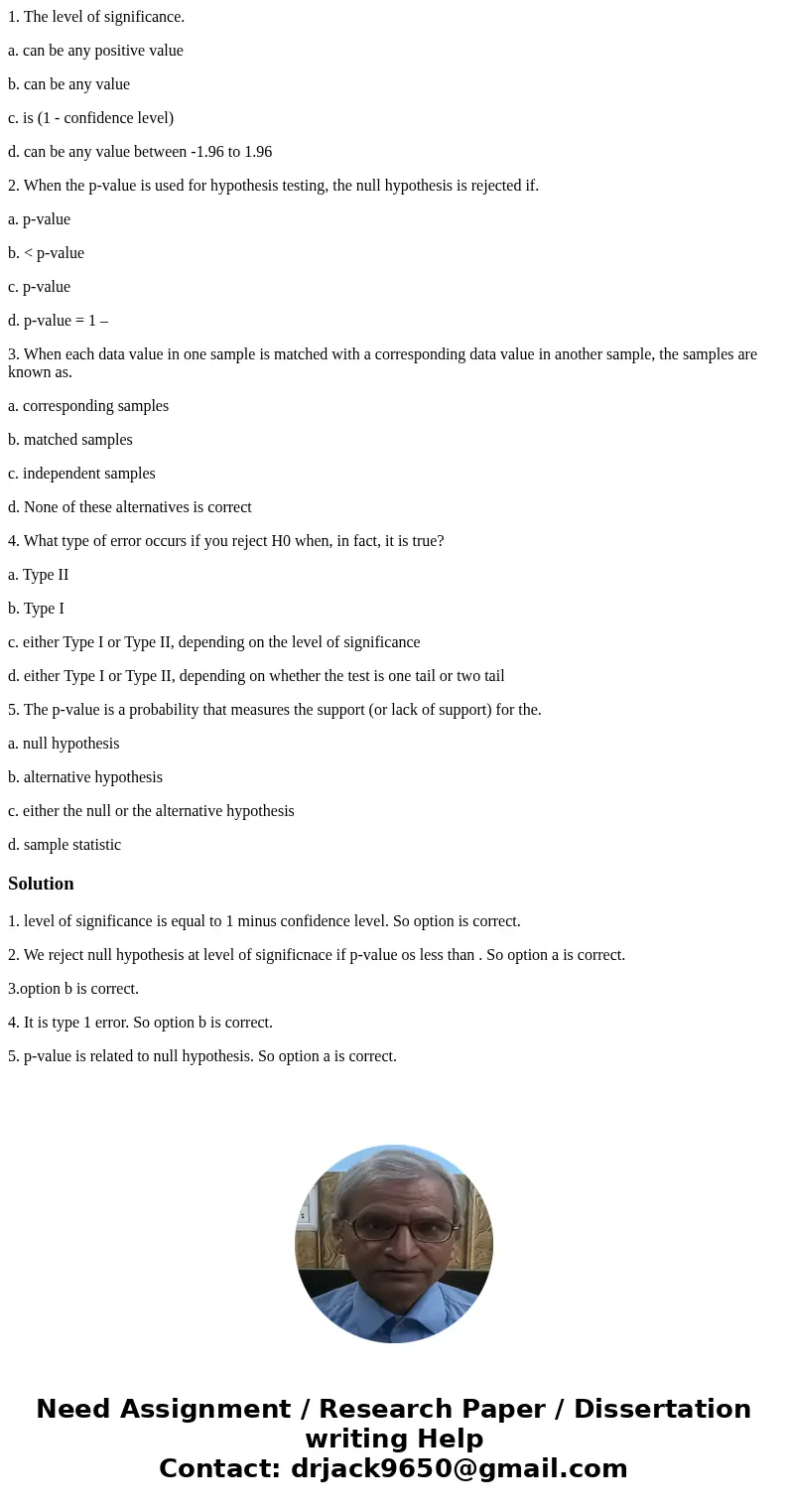1 The level of significance a can be any positive value b ca
1. The level of significance.
a. can be any positive value
b. can be any value
c. is (1 - confidence level)
d. can be any value between -1.96 to 1.96
2. When the p-value is used for hypothesis testing, the null hypothesis is rejected if.
a. p-value
b. < p-value
c. p-value
d. p-value = 1 –
3. When each data value in one sample is matched with a corresponding data value in another sample, the samples are known as.
a. corresponding samples
b. matched samples
c. independent samples
d. None of these alternatives is correct
4. What type of error occurs if you reject H0 when, in fact, it is true?
a. Type II
b. Type I
c. either Type I or Type II, depending on the level of significance
d. either Type I or Type II, depending on whether the test is one tail or two tail
5. The p-value is a probability that measures the support (or lack of support) for the.
a. null hypothesis
b. alternative hypothesis
c. either the null or the alternative hypothesis
d. sample statistic
Solution
1. level of significance is equal to 1 minus confidence level. So option is correct.
2. We reject null hypothesis at level of significnace if p-value os less than . So option a is correct.
3.option b is correct.
4. It is type 1 error. So option b is correct.
5. p-value is related to null hypothesis. So option a is correct.

 Homework Sourse
Homework Sourse